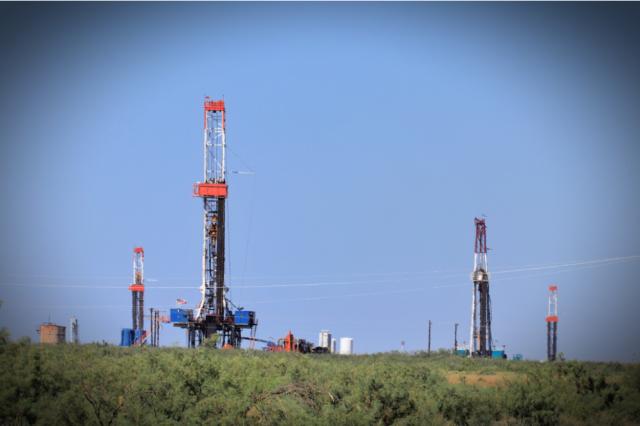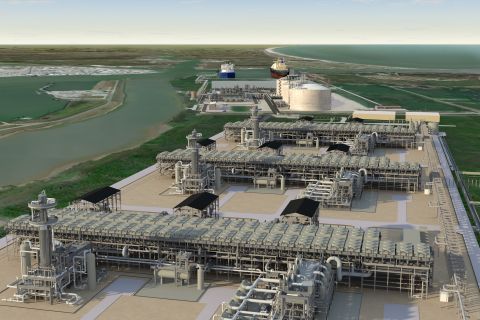
Multiple rigs drilling for oil and gas in the Permian Basin. In a survey by the Federal Reserve Bank of Dallas released March 24, companies reported a breakeven price in the Permian of $50/bbl, $1 higher than last year. (Source: Shutterstock.com)
Activity and spending in U.S. oil fields is soaring this year as the industry recovers from last year’s pandemic-driven oil price crash, according to cautiously optimistic energy company executives polled by the Federal Reserve Bank of Dallas in a survey released on March 24.
While improved oil prices have boosted expectations for 2021, executives are cautious about the potential for Biden administration oil and gas policy changes or the threat that OPEC and partners could easily return oil to the global market.
“While the price increases have been welcome news, OPEC+ is a sword of Damocles: if U.S. operators raise capital expenditures, OPEC+ will open its taps and flood the market,” one executive said. “There is a tense detente currently.”
The COVID-19 pandemic dented global oil demand, prompting deep cuts in drilling last year by shale oil producers.
More than half of executives said they were not hiring more workers and were concerned the administration of President Joe Biden—a Democrat who defeated Republican Donald Trump in the November election—would take a tough stance on regulation.
“I believe that it is their goal to effectively shut down our industry, and they will pursue that end with great energy,” one executive said.
Several executives also cited the potential for greater regulation in New Mexico, a Democratic-leaning state with lots of federal land and a large slice of the Permian Basin, the top U.S. oil field.
New restrictions could boost oil prices, but also create “political risk and pose a long-term threat,” one executive said.
Survey respondents expect a U.S. oil price of $61/bbl by year-end, around the same level where it traded on March 24.
Companies reported a breakeven price of $50/bbl, $1 higher than last year, to drill in the Permian Basin.
Recommended Reading
Segrist: The LNG Pause and a Big, Dumb Question
2024-04-25 - In trying to understand the White House’s decision to pause LNG export permits and wondering if it’s just a red herring, one big, dumb question must be asked.
Texas LNG Export Plant Signs Additional Offtake Deal With EQT
2024-04-23 - Glenfarne Group LLC's proposed Texas LNG export plant in Brownsville has signed an additional tolling agreement with EQT Corp. to provide natural gas liquefaction services of an additional 1.5 mtpa over 20 years.
US Refiners to Face Tighter Heavy Spreads this Summer TPH
2024-04-22 - Tudor, Pickering, Holt and Co. (TPH) expects fairly tight heavy crude discounts in the U.S. this summer and beyond owing to lower imports of Canadian, Mexican and Venezuelan crudes.
What's Affecting Oil Prices This Week? (April 22, 2024)
2024-04-22 - Stratas Advisors predict that despite geopolitical tensions, the oil supply will not be disrupted, even with the U.S. House of Representatives inserting sanctions on Iran’s oil exports.
Association: Monthly Texas Upstream Jobs Show Most Growth in Decade
2024-04-22 - Since the COVID-19 pandemic, the oil and gas industry has added 39,500 upstream jobs in Texas, with take home pay averaging $124,000 in 2023.




